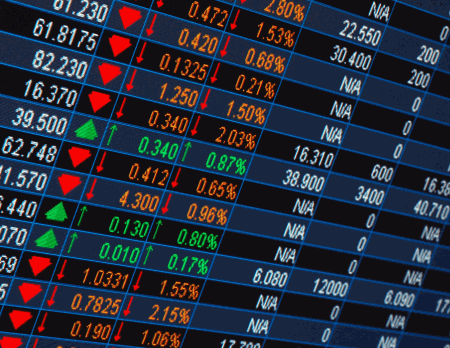Cable Stocks Ride M&A Wave

With just 10 days left in the year and the Dow Jones Industrial Average inching toward a record 20,000 points, cable distribution stocks were a good place to be in 2016, with the sector up nearly 40%.
Dow 20,000 has been a possibility for days – the index was at 19,919.73, down 22 points at 10:45 a.m. on Dec. 22. The market barometer has gained more than 4,000 points in the past 12 months.
With consolidation on every cable investor's mind in the wake of Charter Communications’ $80 billion purchase of Time Warner Cable on May 18, it was no surprise that the two best performers in the sector were Charter – up 43.8%, or $88.74 per share to $291.24 on Dec. 21 – and Cable One, up 43.9%, or $190.21 per share to $623.87 each on Dec. 21. Cable One, which has switched its focus from video to broadband – it has lost about 20% of its video customer base in the past two years – is generally thought to be a prime takeover target in the coming months. But so far, no one has pulled the trigger on a deal.
Comcast, which agreed to purchase content company DreamWorks Animation earlier in the year for about $3.8 billion, rose 25.5% ($14.40 each) between Dec. 31, 2015 and Dec. 21, 2016, mainly on strong execution. The cable operator is expected to report its first full year of basic video customer growth in ten years in 2016.
Still, that combination of solid fundamental growth and merger speculation helped the sector over the hump in 2016 compared to 10% growth in 2015. And though consoldiation has removed two stocks from the distributor ranks in 2016 -- Time Warner Cable and Cablevision Systems, which was purchased by Altice USA in June -- one more stock could be added tto the mix in 2017. Altice USA, the domestic arm of Altice N.V. has said it is exploring a possible IPO of a minority interest in the company in 2017.
Liberty Global, the international cable operator chaired by cable legend John Malone, was the lone declining stock in the sector, dipping 16.5%, or $6.14 per share, to $31.06 on Dec. 21.
Programmers had a tougher time, with declining subscribers, falling ratings and sluggish ad sales outweighing possible M&A activity. On that note, Time Warner Inc. was the top performer in the sector, rising 48.4% ($31.32 each) between Dec. 31 and Dec. 21 to $95.99 per share. Driving most of that growth was its October agreement to be purchased by AT&T for $108.7 billion, or about $107.50 per share.
Multichannel Newsletter
The smarter way to stay on top of the multichannel video marketplace. Sign up below.
That deal, which is expected to spark further attempts at vertical integration in the sector, is expected to close by the end of 2017.
AT&T’s stock rose about 23% for the year, from $34.41 on Dec. 31, 2015 to $42.36 on Dec. 21.
Scripps Networks Interactive, another possible M&A target, also posted strong gains for the year, rising 30% ($16.92 each) to $72.13 per share on Dec. 21.
The Walt Disney Co., which has been plagued by subscriber losses at its flagship sports network ESPN, managed to eke out a slight gain for the year, rising 0.5% (48 cents each) to $105.56 per share).
Viacom, which seemed to be headed toward a recombination with former corporate sister CBS until controlling shareholder Sumner Redstone’s National Amusements Inc. put the kibosh on the deal, fell 14.4% ($5.91 each) to $35.25 per share on Dec. 21. In contrast, CBS, which has ridden a wave of rising retrans fees, strong ratings and success at its over-the-top services CBS All Access and Showtime Anytime rose 37.1% ($17.50) for the year, closing at $64.63 each on Dec. 21.
Other programmers reported more modest gains, with 21st Century Fox up 4.7%, Discovery Communications up 6.6% and MSG Networks up 4.6% for the year.
At Netflix, continued commitment to original programming and subscriber growth helped boost its stock up 10.6% ($12.12 each) for the year to $126.50 per share.
The biggest decliners in the programming sector were AMC Networks, down 30.3% ($22.61 each) to $52.07 per share for the year; and QVC Group, down 26% ($7.11 each) to $20.21 per share.
